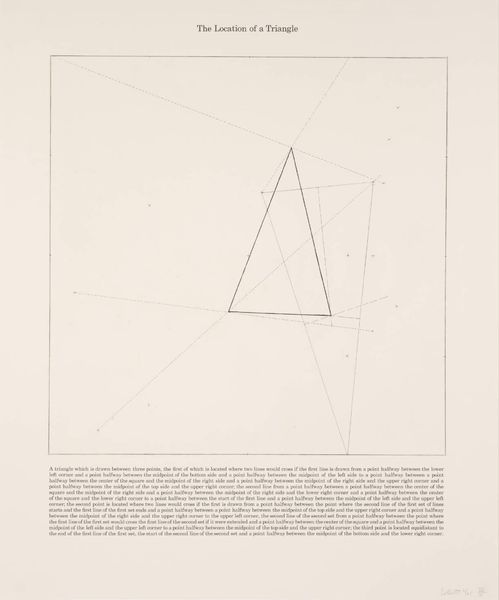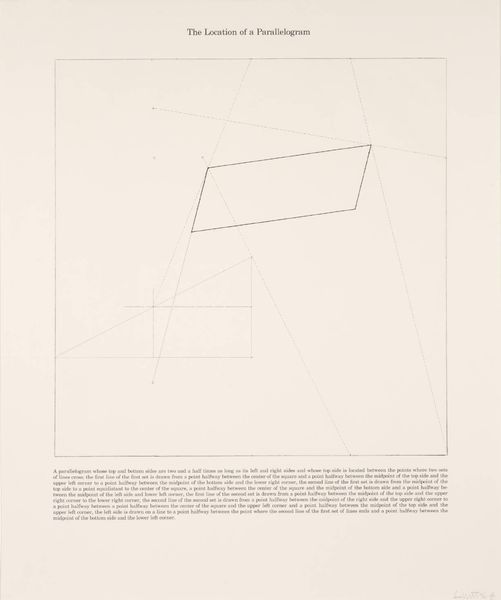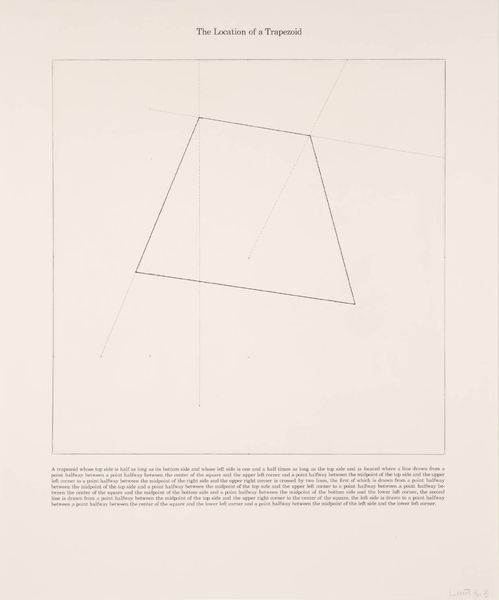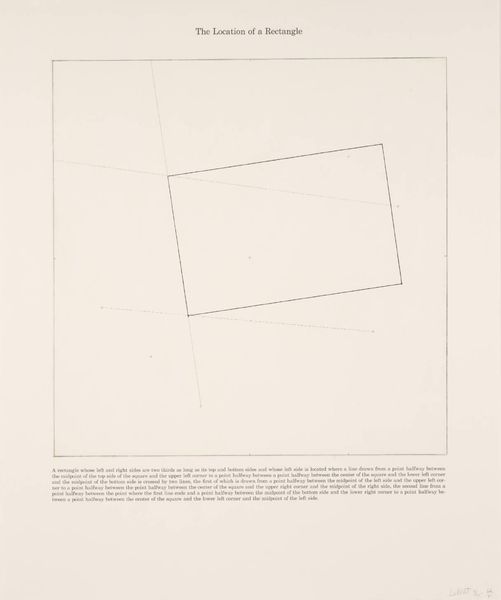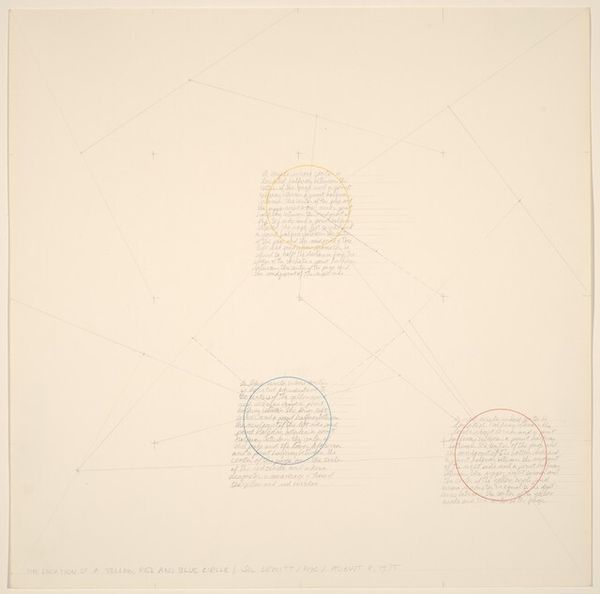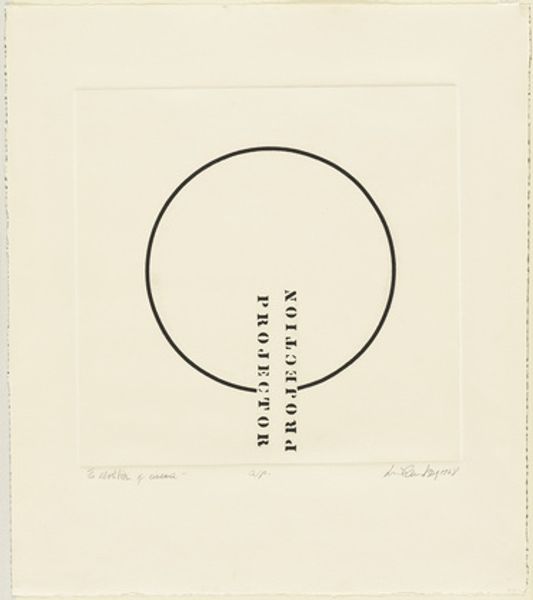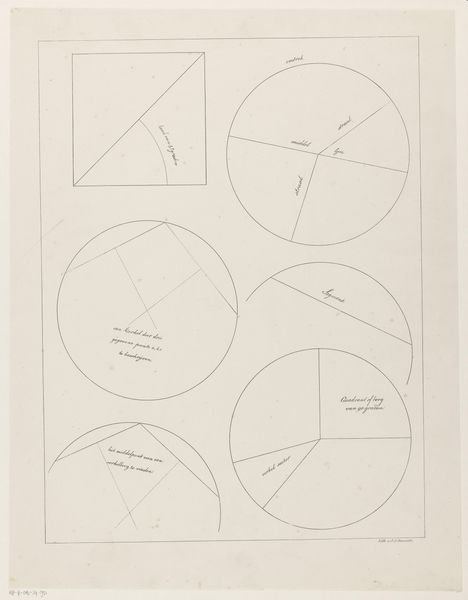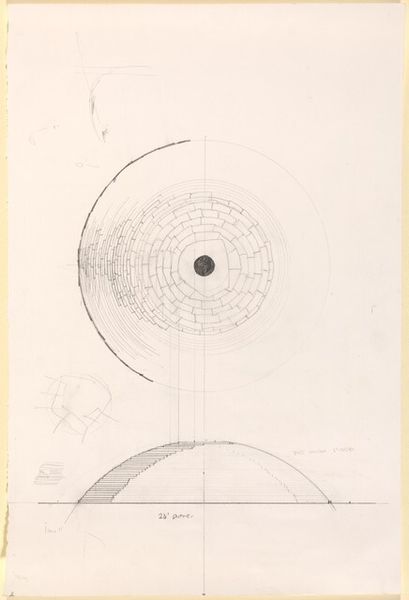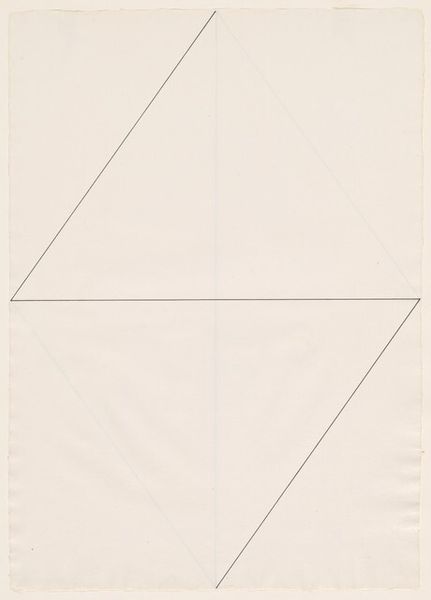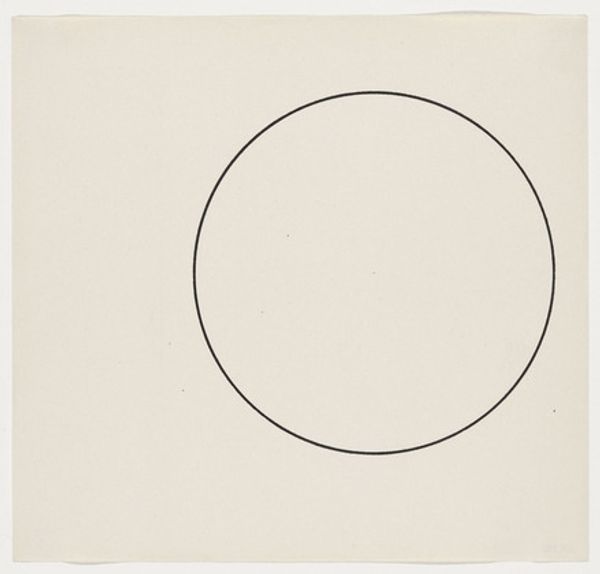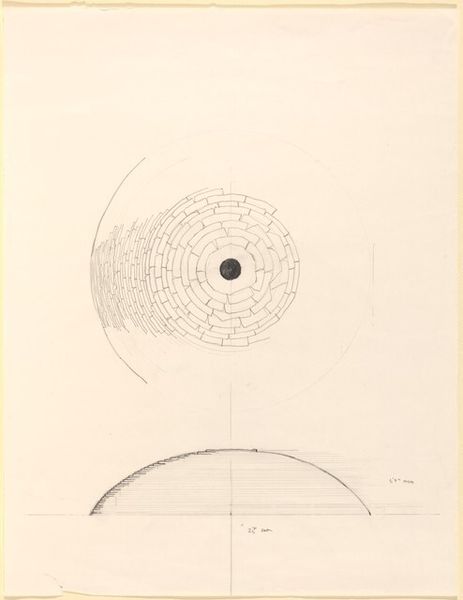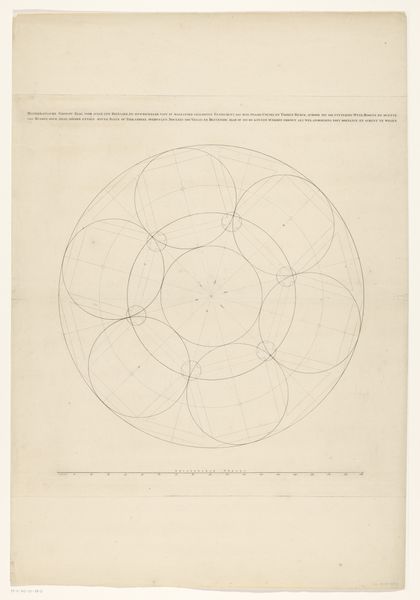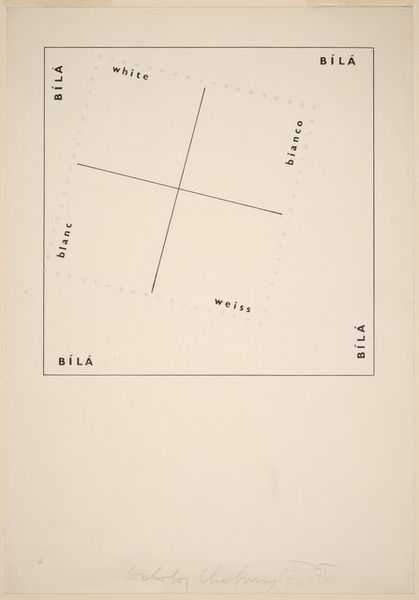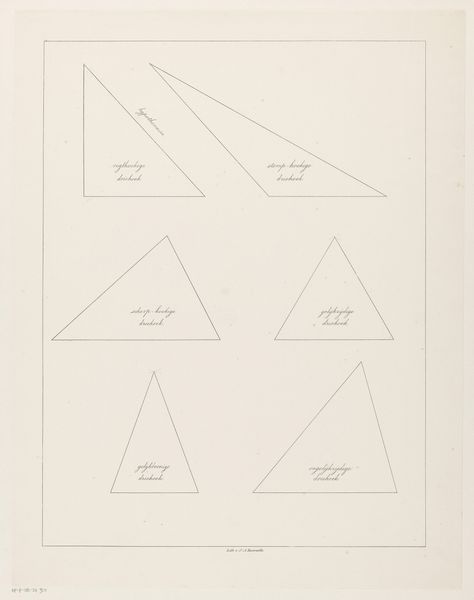![[no title] by Sol LeWitt](/_next/image?url=https%3A%2F%2Fd2w8kbdekdi1gv.cloudfront.net%2FeyJidWNrZXQiOiAiYXJ0ZXJhLWltYWdlcy1idWNrZXQiLCAia2V5IjogImFydHdvcmtzLzM4MWQ2NjdhLTVhODctNDU5Ni05ODg1LWY0ZjJhMjEzNmRiOC8zODFkNjY3YS01YTg3LTQ1OTYtOTg4NS1mNGYyYTIxMzZkYjhfZnVsbC5qcGciLCAiZWRpdHMiOiB7InJlc2l6ZSI6IHsid2lkdGgiOiAxOTIwLCAiaGVpZ2h0IjogMTkyMCwgImZpdCI6ICJpbnNpZGUifX19&w=3840&q=75)
Dimensions: image: 400 x 406 mm
Copyright: © The estate of Sol LeWitt | CC-BY-NC-ND 4.0 DEED, Photo: Tate
Curator: This work by Sol LeWitt, simply titled "The Location of a Circle," immediately gives the impression of something both precise and ethereal. Editor: Yes, the overlapping geometric forms and faint lines suggest a hidden order. A circle amidst a network of calculated gestures. What could it symbolize here? Curator: Well, LeWitt was deeply invested in the process of creation itself. The diagrammatic elements highlight his use of systems and pre-determined rules as the true essence of art. Editor: So, the circle—a timeless symbol of wholeness or perfection—is being 'located' through a very human, imperfect process of construction. There's a tension there, isn’t there? Curator: Precisely! Think of it as a commentary on the relationship between concept and execution. The physical artifact only serves as a trace of the initial idea. Editor: I like that. It reframes the image. Rather than fixating on the circle, we see the journey, the methodology. The "how" becomes the significant part. Curator: Indeed. It challenges our expectations of what constitutes a finished artwork. It's about the underlying structure, the labor, the conceptual framework. Editor: The symbolism lies in the making, not the made. It makes you wonder about the symbols that surround the artist and the materials that influence them. Curator: Exactly. LeWitt compels us to consider the essence of art. Editor: Thank you. That’s a new way of considering the geometry of existence.
Comments
Join the conversation
Join millions of artists and users on Artera today and experience the ultimate creative platform.
tate 7 months ago
⋮
Each print includes a text which gives details of the location within a square of a geometric figure. Each print concerns a different figure; circle, square, triangle, rectangle, parallelogram and trapezoid. Above each text is an image which is a visual equivalent to the text, portraying each figure and the points and lines that Lewitt used to plot it. The mark of the etching plate provides the outer frame for each figure. When Lewitt made this work the texts preceded the images, which were mapped out on paper before being etched onto the plate. Etching was chosen because it provided the fine lines he wanted. Lewitt compared his procedure to plotting navigational routes. Gallery label, September 2004
